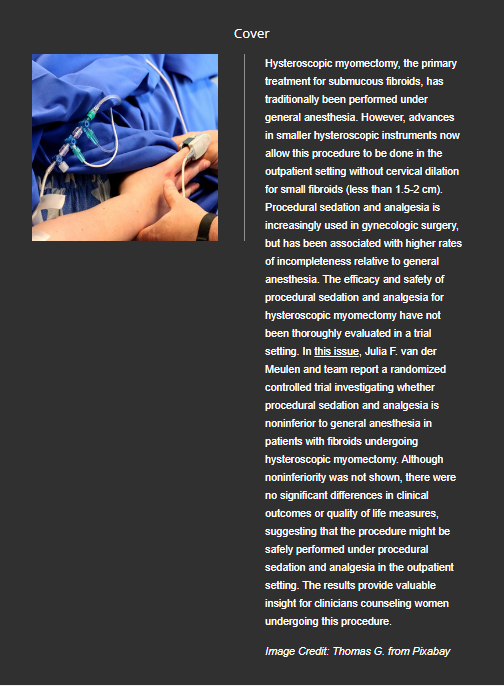Socioeconomic and ethnic disparities associated with access to cochlear implantation for severe-to-profound hearing loss: A multicentre observational study of UK adults
IF 15.8
1区 医学
Q1 Medicine
引用次数: 0
Abstract
Background Patients with severe-to-profound hearing loss may benefit from management with cochlear implants. These patients need a referral to a cochlear implant team for further assessment and possible surgery. The referral pathway may result in varied access to hearing healthcare. This study aimed to explore referral patterns and whether there were any socioeconomic or ethnic associations with the likelihood of referral. The primary outcome was to determine factors influencing referral for implant assessment. The secondary outcome was to identify factors impacting whether healthcare professionals had discussed the option of referral. Methods and findings A multicentre multidisciplinary observational study was conducted in secondary care Otolaryngology and Audiology units in Great Britain. Adults fulfilling NICE (2019) audiometric criteria for implant assessment were identified over a 6-month period between 1 July and 31 December 2021. Patient- and site-specific characteristics were extracted. Multivariable binary logistic regression was employed to compare a range of factors influencing the likelihood of implant discussion and referral including patient-specific (demographics, past medical history, and degree of hearing loss) and site-specific factors (cochlear implant champion and whether the hospital performed implants). Hospitals across all 4 devolved nations of the UK were invited to participate, with data submitted from 36 urban hospitals across England, Scotland, and Wales. Nine hospitals (25%) conducted cochlear implant assessments. The majority of patients lived in England (n = 5,587, 86.2%); the rest lived in Wales (n = 419, 6.5%) and Scotland (n = 233, 3.6%). The mean patient age was 72 ± 19 years (mean ± standard deviation); 54% were male, and 75·3% of participants were white, 6·3% were Asian, 1·5% were black, 0·05% were mixed, and 4·6% were self-defined as a different ethnicity. Of 6,482 submitted patients meeting pure tone audiometric thresholds for cochlear implantation, 311 already had a cochlear implant. Of the remaining 6,171, 35.7% were informed they were eligible for an implant, but only 9.7% were referred for assessment. When adjusted for site- and patient-specific factors, stand-out findings included that adults were less likely to be referred if they lived in more deprived area decile within Indices of Multiple Deprivation (4th (odds ratio (OR): 2·19; 95% confidence interval (CI): [1·31, 3·66]; p = 0·002), 5th (2·02; [1·21, 3·38]; p = 0·05), 6th (2·32; [1·41, 3·83]; p = 0.05), and 8th (2·07; [1·25, 3·42]; p = 0·004)), lived in London (0·40; [0·29, 0·57]; p < 0·001), were male (females 1·52; [1·27, 1·81]; p < 0·001), or were older (0·97; [0·96, 0·97]; p < 0·001). They were less likely to be informed of their potential eligibility if they lived in more deprived areas (4th (1·99; [1·49, 2·66]; p < 0·001), 5th (1·75; [1·31, 2·33], p < 0·001), 6th (1·85; [1·39, 2·45]; p < 0·001), 7th (1·66; [1·25, 2·21]; p < 0·001), and 8th (1·74; [1·31, 2·31]; p < 0·001) deciles), the North of England or London (North 0·74; [0·62, 0·89]; p = 0·001; London 0·44; [0·35, 0·56]; p < 0·001), were of Asian or black ethnic backgrounds compared to white patients (Asian 0·58; [0·43, 0·79]; p < 0·001; black 0·56; [0·34, 0·92]; p = 0·021), were male (females 1·46; [1·31, 1·62]; p < 0·001), or were older (0·98; [0·98, 0·98]; p < 0·001). The study methodology was limited by its observational nature, reliance on accurate documentation of the referring service, and potential underrepresentation of certain demographic groups. Conclusions The majority of adults meeting pure tone audiometric threshold criteria for cochlear implantation are currently not appropriately referred for assessment. There is scope to target underrepresented patient groups to improve referral rates. Future research should engage stakeholders to explore the reasons behind the disparities. Implementing straightforward measures, such as educational initiatives and automated pop-up tools for immediate identification, can help streamline the referral process.与接受人工耳蜗植入治疗重度至永久性听力损失有关的社会经济和种族差异:英国成人多中心观察研究
背景重度到永久性听力损失患者可能会受益于人工耳蜗的治疗。这些患者需要转诊到人工耳蜗植入团队接受进一步评估,并可能接受手术治疗。转诊途径可能会导致患者获得听力保健的机会不同。本研究旨在探讨转诊模式,以及转诊的可能性是否与社会经济或种族有关。主要结果是确定影响转诊进行植入评估的因素。次要结果是确定影响医护人员是否讨论过转诊选择的因素。方法和结果 在英国的二级医疗耳鼻喉科和听力科进行了一项多中心多学科观察研究。在 2021 年 7 月 1 日至 12 月 31 日的 6 个月期间,对符合 NICE(2019 年)听力测定标准的成人进行了植入评估。提取了患者和特定场所的特征。采用多变量二元逻辑回归来比较影响植入讨论和转诊可能性的一系列因素,包括患者特异性因素(人口统计学、既往病史和听力损失程度)和医院特异性因素(人工耳蜗植入冠军和医院是否进行过植入)。英国所有 4 个分权国家的医院均受邀参与,英格兰、苏格兰和威尔士的 36 家城市医院提交了数据。九家医院(25%)进行了人工耳蜗植入评估。大部分患者居住在英格兰(5,587 人,86.2%),其余患者居住在威尔士(419 人,6.5%)和苏格兰(233 人,3.6%)。患者平均年龄为 72 ± 19 岁(平均 ± 标准差);54% 为男性,75-3% 的参与者为白人,6-3% 为亚裔,1-5% 为黑人,0-05% 为混血,4-6% 自定义为不同种族。在提交的 6482 名符合人工耳蜗植入纯音测听阈值的患者中,有 311 人已经植入了人工耳蜗。在剩余的 6171 名患者中,有 35.7% 的人被告知符合植入条件,但只有 9.7% 的人被转介接受评估。在对地点和患者的特定因素进行调整后,突出的发现包括:如果成年人居住在多重贫困指数中较贫困的十分位数(第 4 位(几率比(OR):2-19;95% 置信区间(CI):[1-31, 3-66];P = 0-002)、第 5 位(2-02;[1-21, 3-38];P = 0-05)、第 6 位(2-32;[1-41, 3-83];P = 0.0-004)、住在伦敦(0-40;[0-29,0-57];p < 0-001)、男性(女性 1-52;[1-27,1-81];p < 0-001)或年龄较大(0-97;[0-96,0-97];p < 0-001)。如果他们居住在较为贫困的地区,那么他们被告知自己可能符合条件的可能性较低(第 4 位 (1-99; [1-49, 2-66]; p < 0-001)、第 5 位 (1-75; [1-31, 2-33]; p < 0-001)、第 6 位 (1-85;1-85; [1-39, 2-45]; p < 0-001)、第 7(1-66; [1-25, 2-21];p < 0-001)和第 8(1-74; [1-31, 2-31];p < 0-001)十分位数)、英格兰北部或伦敦(北 0-74;0-74;[0-62,0-89];p = 0-001;伦敦 0-44;[0-35,0-56];p < 0-001),与白人患者相比,亚裔或黑人患者(亚裔 0-58;[0-43,0-79];p<0-001;黑人 0-56;[0-34,0-92];p = 0-021)、男性(女性 1-46;[1-31,1-62];p<0-001)或年龄较大(0-98;[0-98,0-98];p<0-001)。研究方法的局限性在于其观察性质、对转诊服务准确记录的依赖性以及某些人口群体的代表性可能不足。结论 目前,大多数符合人工耳蜗植入纯音听阈标准的成年人并未被适当转诊进行评估。有必要针对代表性不足的患者群体提高转诊率。未来的研究应让利益相关者参与进来,共同探讨造成这种差异的原因。实施直接的措施,如教育措施和即时识别的自动弹出工具,有助于简化转诊流程。
本文章由计算机程序翻译,如有差异,请以英文原文为准。
求助全文
约1分钟内获得全文
求助全文
来源期刊

PLoS Medicine
MEDICINE, GENERAL & INTERNAL-
CiteScore
17.60
自引率
0.60%
发文量
227
审稿时长
4-8 weeks
期刊介绍:
PLOS Medicine is a prominent platform for discussing and researching global health challenges. The journal covers a wide range of topics, including biomedical, environmental, social, and political factors affecting health. It prioritizes articles that contribute to clinical practice, health policy, or a better understanding of pathophysiology, ultimately aiming to improve health outcomes across different settings.
The journal is unwavering in its commitment to uphold the highest ethical standards in medical publishing. This includes actively managing and disclosing any conflicts of interest related to reporting, reviewing, and publishing. PLOS Medicine promotes transparency in the entire review and publication process. The journal also encourages data sharing and encourages the reuse of published work. Additionally, authors retain copyright for their work, and the publication is made accessible through Open Access with no restrictions on availability and dissemination.
PLOS Medicine takes measures to avoid conflicts of interest associated with advertising drugs and medical devices or engaging in the exclusive sale of reprints.
 求助内容:
求助内容: 应助结果提醒方式:
应助结果提醒方式:


